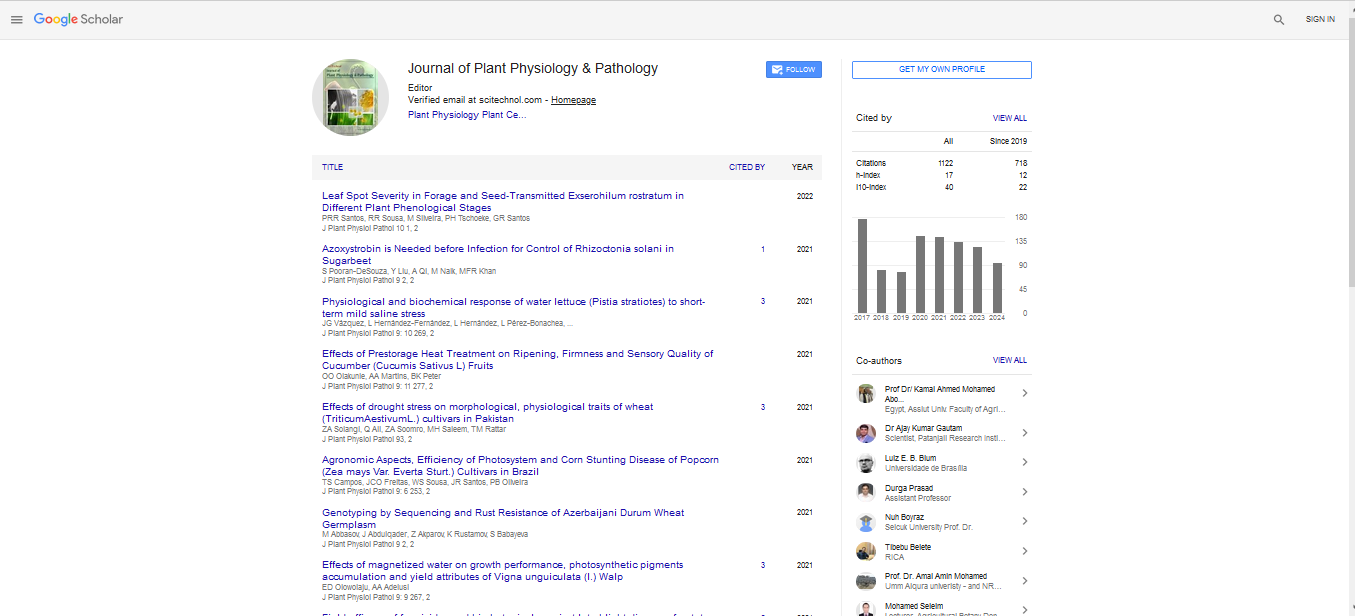Rootâ??sourced NADPHâ??dependent H2O2 is essential to delay leaf senescence in halophytic plantâ?? seashore paspalum during salt stress
Ling Pan
Yangzhou University, China.
: J Plant Physiol Pathol
Abstract
High salinity stress can hasten leaf senescence, leading to a decline in crop yield and quality. This process is facilitated by the excessive Na+ induced by salt stress, which results in chloroplast destruction and promotes plant aging hormones. Previous reports have indicated that hydrogen peroxide (H2O2), specifically root-sourced H2O2, mediates the regulation of Na+/K+ homeostasis and leaf senescence. However, the role of rootsourced H2O2 in halophytic plants’ leaf senescence regulation remains incompletely understood. Therefore, this study aimed to investigate whether and how the root−sourced NADPH−mediated H2O2 were involved in delaying leaf senescence, using seashore paspalum as a model plant. Our findings demonstrate that root−sourced NADPH−mediated H2O2 significantly contributes to delaying leaf senescence by regulating JA homeostasis as well as JA−induced SAGs. Additionally, our results also provide evidence of root-sourced NADPH−mediated H2O2’s role in regulating root Na+/K+ flux. Thus, our study underscores the importance of root−sourced H2O2 in retarding leaf senescence in salt-stressed P. vaginatum plants, providing new insights into the potential function of root−dependent H2O2 in leaf senescence. Keywords: Salt stress, Leaf senescence, Root− sourced H2O2, Ion Homeostasis, Jasmonic acid homeostasis, SAGs, Paspalum vaginatum.
Biography
Ms. Ling Pan is a dedicated researcher in the Department of Grassland Science at Sichuan Agricultural University, Chengdu, China. With a passion for sustainable agriculture, her work focuses on advancing knowledge in grassland science. Through her research, she contributes to the understanding of ecological systems and their impact on agriculture. Ms. Pan is committed to promoting environmentally friendly practices for a resilient and productive agricultural future.
 Spanish
Spanish  Chinese
Chinese  Russian
Russian  German
German  French
French  Japanese
Japanese  Portuguese
Portuguese  Hindi
Hindi 
